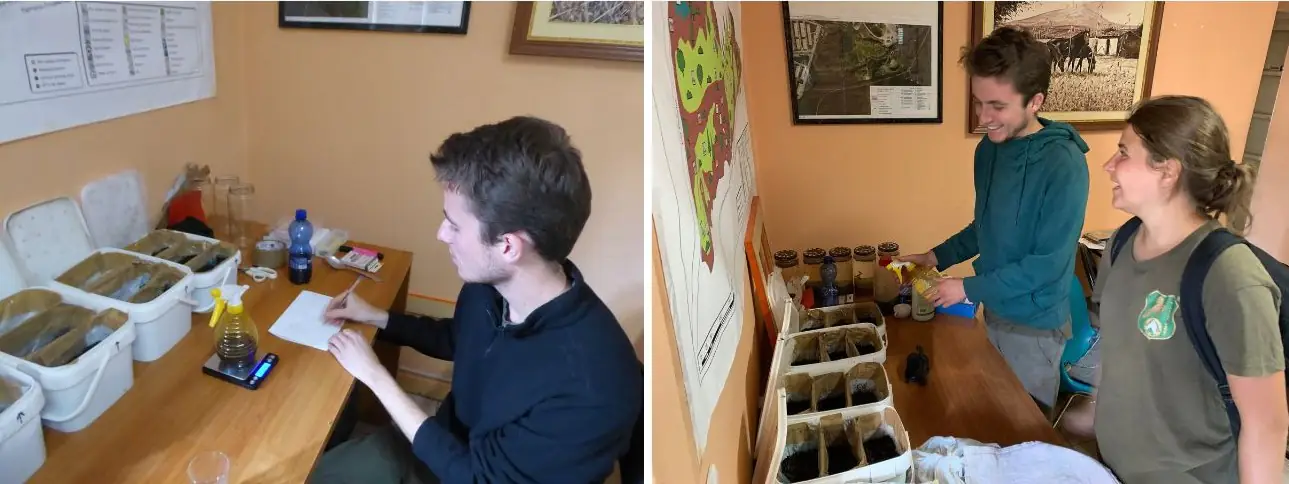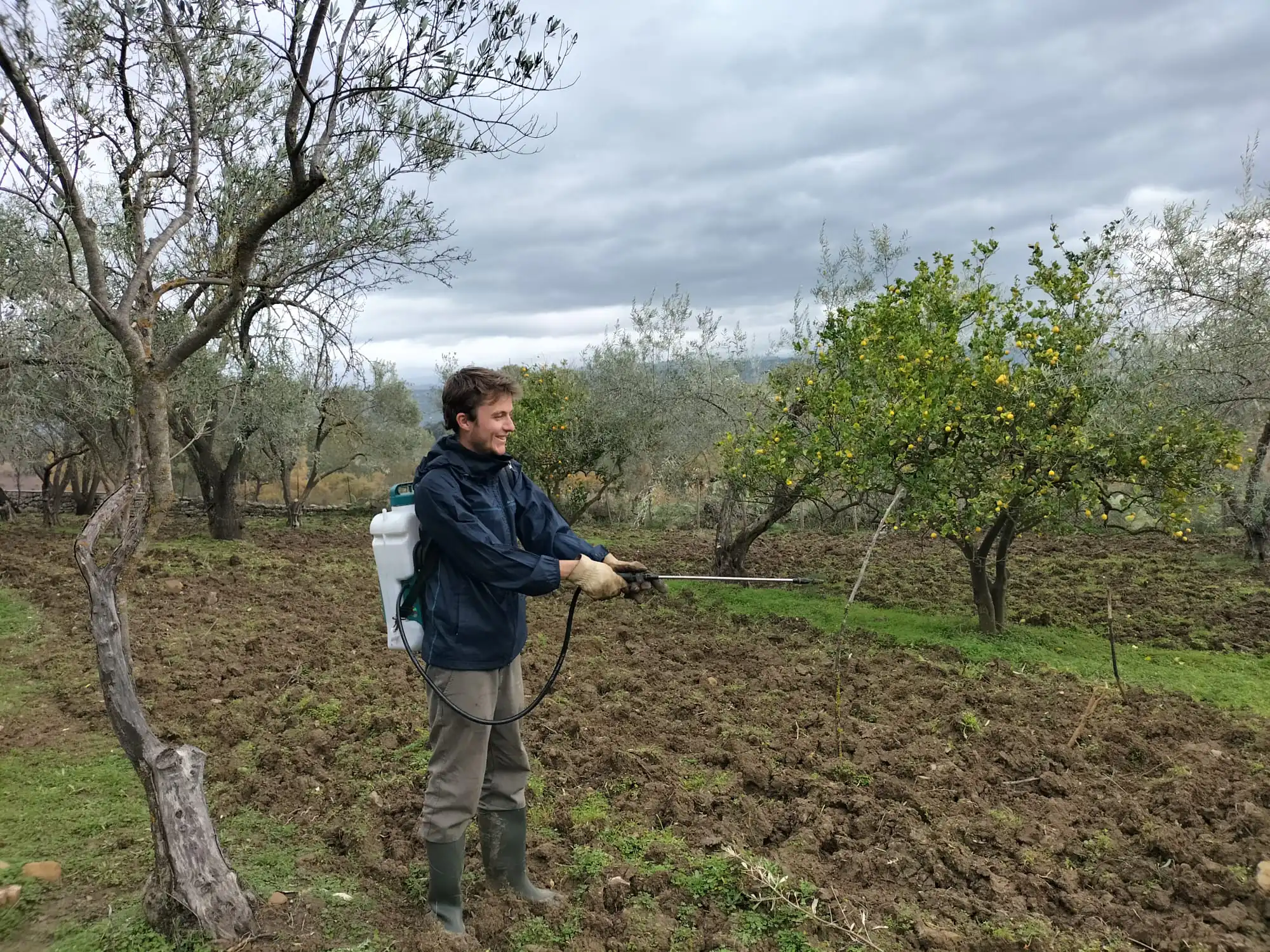Humus per la Biosfera – Microorganisms for Humus Growth

Within our humus project, microorganisms are a central element of our research work as they play an important role in the conversion of organic matter to humus.
Together with international volunteers and students, we are experimenting with commercial “Effective Microorganisms” (EM) to derive recommendations for action in agriculture and domestic composting. EM are used in agriculture, households and for nutrition to shift the milieu of bacteria, microalgae and fungi in favour of the beneficial organisms. They shall contribute to a quick organic transformation in humus.
In Sicily, the organic waste of many households ends up in the trash and is no longer part of the natural soil cycle. With the right methods, the organic materials could be transformed into valuable nutrient-rich humus by creating compost or bokashi (the anaerobe process of organic material). To do so, kitchen scraps are added to a bin and after some weeks the end product is a pre-compost and bokashi juice or liquid fertilizer.

Next steps will be the distribution of knowledge and experience exchange within our project region around the Etna, in order to reach all of the addressed 140,000 inhabitants.


We also use microorganisms to create Terra Preta (see our article “Terra Preta” for Carbon Sequestration) and they are one of the topics during our regular indoor lectures in school classes (see our article Humus per la Biosfera – Indoor Environmental Education).
The results of the studies can be found on Terre della Biosfera’s website.
